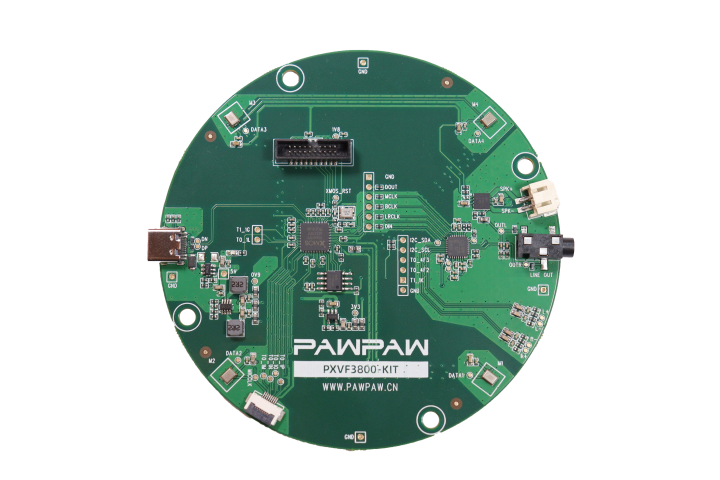Solution Background
Online meeting, or VoIP Conference is quickly becoming the go-to option for businesses and consumers alike. High-quality audio is crucial for boosting collaboration efficiency. To deliver a face-to-face online meeting experience, it's essential to capture voice clearly and accurately, and to offer convenient features for effective communication. As a result, there's a significant increase in demand for high-quality, reliable, and cost-effective collaboration solutions on conferencing platforms.
As remote work trends upward in recent years, the demand for high-quality, reliable, and cost-effective collaboration solutions has significantly increased. For conference platforms to provide an almost face-to-face experience, they must capture voice clearly and accurately to ensure efficient communication.
Traditional microphone array solutions not only capture human voices in meetings but also capture other environmental noises. The advanced voice algorithms of XMOS have addressed this issue, and the PXVF3800-KIT developed based on XMOS's new generation master controller XVF3800 perfectly meets the current application needs of meeting scenarios.
Solution Overview
PXVF3800-KIT is a high-performance meeting voice solution. Equipped with advanced microphone array algorithms and audio processing technology, it can deliver high-quality voice signals for collaboration apps like Microsoft Teams™, Zoom™, etc.

Its full-duplex acoustic echo cancellation (AEC) technology can effectively eliminate both near-end and far-end echoes. Using adaptive multi-beamforming with a circular four-mic array, it efficiently tracks multiple near-end audio sources, focusing on the speaker's voice while reducing noise from other areas.

This evaluation board has flexible interfaces and can be quickly integrated into products, helping to speed up time to market. It's perfect for high-end audio equipment manufacturers for their evaluation and testing needs.
Solution Features

Cutting-edge Audio Processing Algorithms
full-duplex acoustic echo cancellation(AEC)
- Voice Activity Detection (VAD)
- Adaptive Beamforming (BF)
- Automatic Gain Control (AGC)
- Noise Suppression(NS)
- Dereverberation

Fast Multi-Source Tracking
By using adaptive beamforming technology, when a speech signal is detected, it quickly identifies the direction of arrival (DoA) of the voice and automatically focuses on that direction.
- By suppressing side lobes, it reduces off-area noise while improving noise reduction and dereverberation levels.

Flexible Integration
Provide multiple ports to reduce integration costs.
- Connect to a speaker output
- 3.5mm headphone jack
- AEC analog reference signal input
- Reserved ribbon cable port, to connect a different microphone array
- Output DoA data, indicating the direction of the speaker.
- Voice signals can be used for ASR applications
MCU
The main controller chip optimized for voice calls provides powerful audio processing algorithms.
-
Flexible pairing with 4-way PDM microphone solutions. The microphone array can be adjusted to a bar or circular shape based on the product design.
-
Supports USB Audio Class 2.0 (UAC 2.0);
-
Can integrate to products required to be certified by online meeting collaboration platforms like Microsoft Teams™ and Zoom™.
DSP Algorithm Processing
PXVF3800-KIT includes microphone interfaces, voice processing, and control modules, allowing developers to fully optimize voice performance according to the acoustic characteristics of specific products.
- Acoustic Echo Cancellation (AEC)
The acoustic echo cancellation feature can reduce the echo in the room and eliminate distant echoes, allowing the PXVF3800-KIT to capture clear voice signals.
- Noise Suppression (NS)
Noise suppression reduces static and diffused noise sources.
- Automatic Gain Control (AGC)
Automatically adjust the output voice signal volume to ensure stable loudness level.
- Adaptive Multi-beam Forming (BF)
Adaptive beamformers track stationary and non-stationary voice sources, determine direction of arrival (DoA), and isolate desired speech, thus boosting polyphony and reverberation cancellation performance.
- Voice Activity Detection (VAD)
Controls IC and AGC adaptiveness to optimize output of proximal voice.

